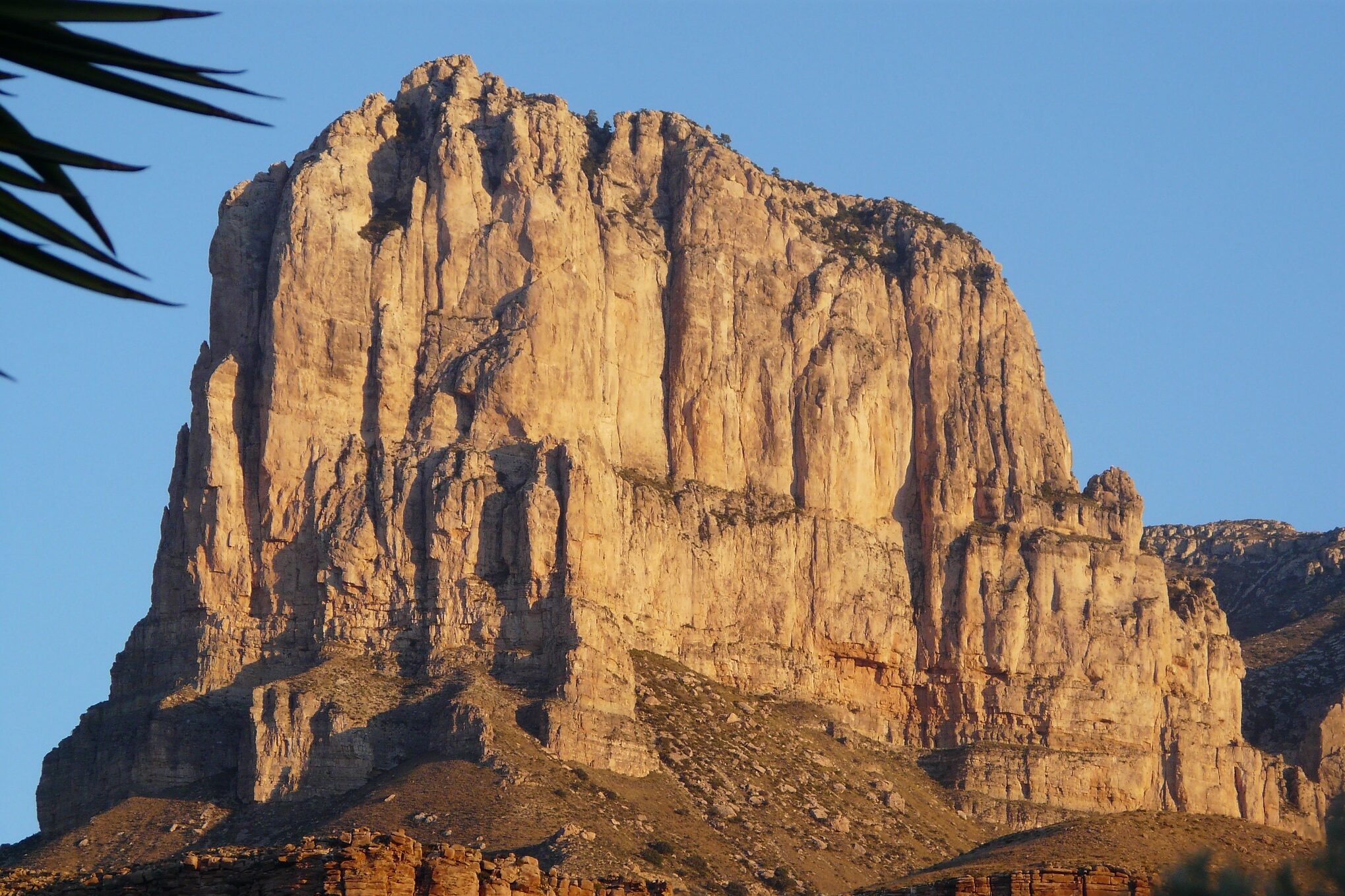On Saturday, April 29, around 6 p.m. local time, search-and-rescue (SAR) operators in southwest Texas received a call from a distressed hiker.
The individual reported he was stranded on a sheer cliff face, standing on an area the size of a sheet of paper, with one handhold. He was getting tired, he told rescuers, and didn’t know how much longer he could hold on. His hiking partner had already fallen 500 feet to his death.
SAR teams scrambled to El Capitan, a 1,000-foot tall limestone formation in Guadalupe Mountains National Park, 100 miles east of El Paso, Texas.
Over almost the next 24 hours, a high-consequence rescue played out, involving teams from all over the area. Three rope-access technicians would ultimately pick the man off the loosely consolidated limestone face, ushering him to safety unharmed.
But the overnight rescue could have played out much differently. A fixed-wing drone with a FLIR thermal camera on board was required to locate the man in the pitch darkness. And rescuers rappelled down to the summit from hovering Blackhawk helicopters in 50mph gusts as pilots fought to steady their sticks.
‘Once-in-a-Career’ Rescue
It was a rescue that professionals call a “once-in-a-career” event. The individuals involved are being considered for various commendations, and one official who helped coordinate the operation said he was “beyond proud” of how his teams responded.
John Majerus is the Assistant Chief of the Carlsbad Fire Department. A SAR team under his command played an integral role in the rescue. Asked about the risk factor they faced, he called it “extremely high.”
“It’s a seminal event for someone involved in rope rescue,” he asserted. “There’s probably never going to be a situation where they’re going to have to do something like this in their career.”
A National Park Service (NPS) press release rattled off the long list of groups involved in the interagency team:
- Texas Department of Public Safety (DPS)
- Aircrews from C Company 2-227th MEDEVAC out of Fort Hood, Texas
- Carlsbad Caverns National Park
- Eddy County, Carlsbad, and Dell City fire departments
- Firefighters from Olympic National Park
- Culberson County Sheriff’s Office
- Culberson County Ambulance Service
From Day Hike to Disaster
For the two hikers, whose names and identifying details are still being protected as of this writing, it all began innocently. The two men planned a day hike to El Capitan, Texas’ eighth-highest point at 8,085 feet. For many groups, that’s about all it takes.
The men’s hike went sideways when, in casual gear like tennis shoes and T-shirts, they strayed onto the cliff face and ended up about 500 feet off the deck.
Disaster struck when one fell. The cliff is famously crumbly, to the point that it prevents technical rock climbing to any degree of safety. But the reasons behind the individual’s death — and why the two hikers ended up in harm’s way at all — are still unclear.
“That’s the great mystery of it all,” Kevin Willard, Division Chief of Administration at the Eddy County Fire Department, said in a Wednesday interview. “I guarantee you they were going out there trying to have a good time and enjoy the parks.”
He added that the survivor was reasonably physically fit and did not appear to be intoxicated at the time rescuers made contact. Logic makes it difficult to guess how the men could have ended up so exposed. While summiting El Capitan via the Guadalupe Peak trail is considered challenging, it’s also popular and generally considered safe, especially in full daylight.
At a 10.6-mile round trip and less than a mile of elevation gain, the trail demands moderate fitness. Hikers in decent shape, as the rescuers confirmed the survivor to be, would likely feel comfortable. On top of that, Saturday, April 29, was a beautiful day at 76 degrees Fahrenheit and partly cloudy.
Volunteer Rescuers Risk All
Regardless of the circumstances that led the men there, rescuers worked to build a plan to spring the survivor. Darkness fell as the interagency team built its plan and gathered assets for its command post at the park visitor center. Meanwhile, they fielded further phone calls with the stranded man that made it clear he was suffering from increasing fatigue on his tiny perch.
“The first time we talked to him, he said he was good. But then, the next couple of times, we could tell he was getting tired. Soon, he told us that he was starting to worry about not being able to hang on,” said Kevin Willard, Division Chief of Administration with the Eddy County Fire Department.
First, they tasked the DPS’s FLIR thermal camera to locate the man on the cliff face. Their first plan was to hoist him out with the MEDEVAC Blackhawks — but that didn’t work because they didn’t have enough cable to reach him from anywhere safe for flying.
Instead, SAR would have to rappel in from above, exposing themselves to the high possibility of rockfall on the loose cliff. Not only was the clock ticking on the man’s physical endurance, but the wind was picking up; 40mph winds became 50mph gusts, making the prospect of a low hover dicey.
The mission was voluntary, Willard pointed out — in a pre-flight briefing, each team member could accept or decline.
“We have written the check up to, and including, giving our lives to help people that we don’t know,” Willard said. “In the incident command post, we sat down with the guys, and we said, ‘You’re about to put your lives at risk, in a calculated manner. If you’re not up to the task, nobody’s going to think any differently of you. But if you want to give this a go, let’s go.'”
Rescue Play-by-Play
The Blackhawks loaded up and thumped out toward El Capitan in the wee hours of Sunday morning. The whipping wind meant the pilots could only hover over one spot on the craggy ridgeline long enough to lower the teams. When they got there, they encountered gusts so strong that only one team could make it to the ground. Both helicopters were soon forced to return to the visitor center, leaving just three rescuers on the formation.
Their drop-in point was over 1,000 yards away on the craggy ridgeline. Navigating toward an entry point far above the stranded man with help from the FLIR images, the team found a suitable anchor point, and two of them rappelled in. Those two stopped to anchor in again 250 feet below, then one continued, directionally, toward the man’s location.
After about an hour of delicate downward progress, contact was established around 5 a.m. Temperatures had dropped to about 40 degrees F, so the T-shirted man was cold but unharmed. However, his meager foothold was so small it would prevent the rescuer from putting a harness on him — if the man moved, he would die. Improvising, the rescuer rigged a webbing harness and secured the man to his line.
Now with a lifeline to the summit established, he and the victim started upward. Progress came mostly via 3:1 hauling. Finally, after 3 hours of labor-intensive ascent on the part of the rescuers, all four individuals emerged safely atop the mountain. The Blackhawks picked them up around 9 a.m. after a short nap.
That the rescue went off without a hitch, despite the cliff’s rotten rock and the high winds, is a testament to the team’s fortitude and skill. For the victim’s part, the ordeal was largely over — he would later be transported to a hospital with no significant injuries or evident harm. He’d proceed to debriefings with the interagency team and, according to Willard, “looked pretty good considering he’d spent 14 hours on a cliff face.”
The Aftermath
Teams would recover his hiking partner’s body at the base of the wall shortly after his rescue concluded. Loose rock prevented a safe recovery until activity on the wall had ended. The only close call of the operation, Willard said, came when falling rock from above fell near the body recovery team. Teams ultimately used a “highline” operation to remove the man’s remains from the steep debris field below the cliff.
Both Willard and Majerus asserted that for the professionals involved in the rescue, it constitutes a defining moment. The rescuers who worked on El Capitan itself are all in line for chief commendations, according to Willard.
“This was a Herculean effort, carried out by highly trained individuals who have the best interests of the community they serve. They performed at as high of a level as I’ve ever seen,” he said.
If anything, their prospective accolades should serve to drive home the risks they faced in serving their community at large. Two people, as Majerus put it, endangered the lives of “dozens” of others.
Guadalupe Mountains National Park superintendent Eric Leonard spoke to the questionable decisions the two visitors made in a situation where such extensive risk could be so easily mitigated.
“This is a remote location. A very, very short search-and-rescue operation is three to six hours. Multiple days could occur,” Leonard explained, noting that “most” hikers who call SAR from the park do not use suitable maps. “The more prepared you are, the more likely it is you’re going to be successful.”
He continued, “From a more philosophical perspective, these mountains will always be here — if you start to feel tired, bad, or uncomfortable about what you’re doing, stop and turn around.”
Leonard said the survivor would not face consequences on the park’s part. But, he said, as far as “broader consequences, I can’t speak to how a person’s going to process that traumatic experience.”








